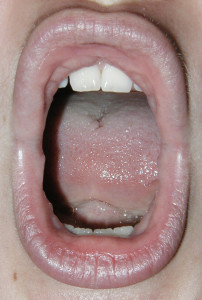
Courtesy of StockVault
We are all familiar with the notion that our facial muscles relax and contract with the emotions that we display on it, which are more often than not involuntary, depending on how we feel. Researchers in Tokyo have identified a similar link between taste and its involuntary display of certain facial expressions based on the different tastes we experience.
Red Orbit reports on this new research which lends itself to the researchers past trials that noted changes in the skin blood flow in the eyelid and nose in response to basic sweet, umami (pleasant savory) and bitter tastes. Now the researchers have extended the study to identify a correlation between changes in circulation in specific parts of the face and the subjective palatability of different complex tastes such as the sweet and sour taste of orange juice.
Hideaki Kashima, Yuka Hamada and Naoyuki Hayashi from the Prefectural University of Hiroshima, Kyushu University and Tokyo Institute of Technology studied 15 test subjects with flavors ranging from sweet chili, orange juice, bitter tea, soup and a water control. All of the various tastes were kept at room temperature and a conductance index (CI) was calculated from the measured skin blood flow as a ration of the mean arterial pressure.
Skin blood flow data from the test subjects’ forehead, eyelid, nose and cheek was additionally measured using laser speckle flowgraphy. The data was recorded 5 s before stimulation and 20s after stimulation. In addition the skin blood flow in the right index finger was measured by laser Doppler flowmetry.
The test subjects retained the taste sample fluids in their mouths for 30s before swallowing and then rinsed their mouths with pure water at 40 °C until the taste had gone. They rated the tastes on six, eleven-point visual analog scales, one for palatability and one for the intensity with respect to each of the five tastes sweet, sour, salty, bitter and spicy. The ratings scaled from +5 (the most pleasant) through 0 (no change) to -5 (the most unpleasant).
Tastes deemed ‘pleasant’ increased blood flow in the eyelid. Chili was found to increase blood flow in all measured areas irrespective of the palatability rating given by the subjects. However, when changes induced by chili sauce were excluded there was a significant correlation between the palatability ratings the test subjects gave and the conductance index values in their eyelids.
“These results suggest that the facial circulatory response reflects the degree of palatability of a foodstuff,” purport the researchers. CI (conductance index) in the eyelid increased significantly in response to chili sauce, orange juice and soup, while CIs in the forehead, nose and cheek decreased in response to bitter tea.
The conductance index in the nose was not found to be related to palatability scores, however bitter tea caused vasoconstriction in the nose. Similar vasoconstriction in the nose has been observed in response to the discomfort of electrical stimulation of a finger or teeth. Temperature decreases have also been noted around the noses of rhesus monkeys in response to negative emotions, and are likely the cause of the observed vasoconstriction in the nose in response to bitter tea.
What are your taste buds telling you?

 Emotient, one of the leading authorities in automated facial expression analysis, newest technology FACET received the Most Innovative Product award from CONNECT awards ceremony held on December 6, 2013. The annual MIP Awards is CONNECT’s largest and most prestigious event, attracting more than 700 of the region’s top business leaders, researchers and capital providers.
Emotient, one of the leading authorities in automated facial expression analysis, newest technology FACET received the Most Innovative Product award from CONNECT awards ceremony held on December 6, 2013. The annual MIP Awards is CONNECT’s largest and most prestigious event, attracting more than 700 of the region’s top business leaders, researchers and capital providers.